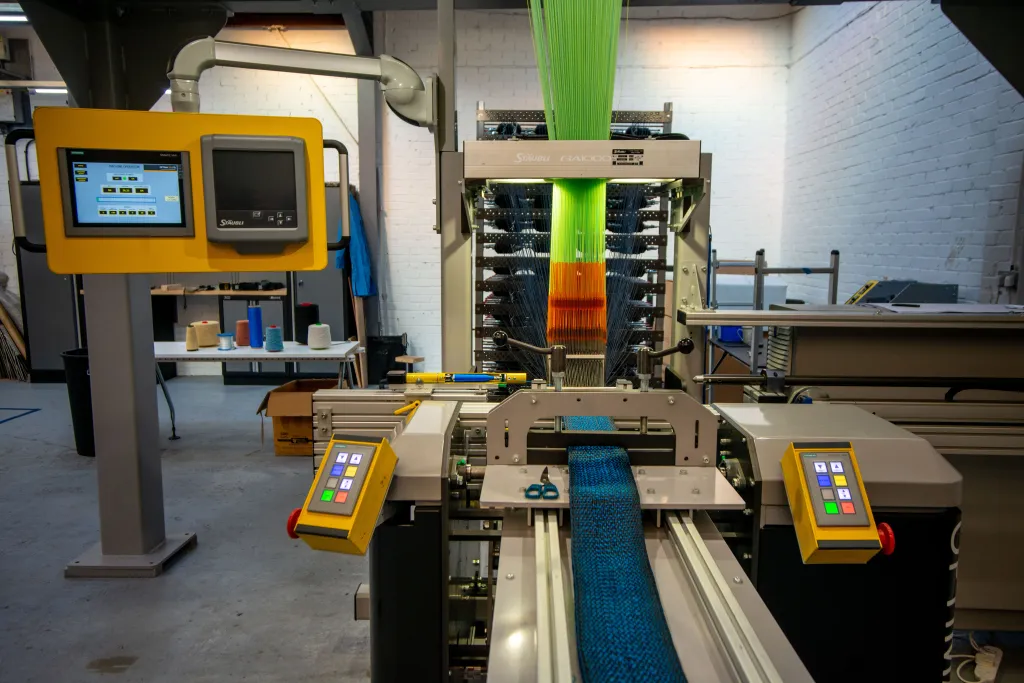3D-weaving technology has been revolutionizing the fashion industry, particularly when it comes to ensuring a perfect fit for shoppers. By using body-scan data from customers, this innovative technology is helping to minimize returns and enhance the overall shopping experience. Traditionally, finding the right size and fit when shopping for clothes online has been a challenge. Customers often struggle with determining their accurate measurements, resulting in ill-fitting garments and the need for returns. This not only leads to customer dissatisfaction but also increases costs for retailers due to the additional shipping and handling expenses associated with returns.
However, with the emergence of 3D-weaving technology, this issue may become a thing of the past. This technology utilizes body-scan data obtained from shoppers to create custom-made garments that perfectly match their unique measurements and proportions. By incorporating this data into the weaving process, fashion brands can ensure a superior fit, reducing the likelihood of returns and increasing customer satisfaction. The process begins with customers undergoing a body scan either in-store or through an online platform. This scan captures precise measurements, including body shape, size, and proportions. The data is then transmitted to the 3D-weaving machine, which utilizes advanced algorithms to convert the information into a digital pattern.
The 3D-weaving machine meticulously weaves the fabric, incorporating the customer’s specific measurements into the design. This results in a garment that conforms perfectly to the individual’s body shape. The use of this technology allows for greater accuracy and customization, improving the overall fit and comfort of the clothing. Not only does 3D-weaving technology enhance the fit of the garments, but it also offers numerous benefits for shoppers. Firstly, it eliminates the need for customers to manually measure themselves, reducing the chance of errors and ensuring a more accurate fit. Additionally, it saves customers time and effort, as they no longer need to spend hours searching for the right size or dealing with returns. For retailers, implementing 3D-weaving technology can lead to significant cost savings. By reducing the number of returns, companies can save on transportation expenses, restocking fees, and potential garment damages. Moreover, this technology can enhance brand reputation by offering a personalized and exceptional shopping experience to customers.
In terms of SEO optimization, it is crucial to focus on relevant keywords. Therefore, incorporating phrases such as “3D-weaving tech,” “body-scan data,” “better fit,” and “fewer returns” throughout the document can help improve search engine rankings. Additionally, maintaining a clear and concise writing style will ensure readers can easily comprehend the information provided. 3D-weaving technology utilizing body-scan data is transforming the fashion industry by providing a better fit for shoppers and reducing return rates. This innovative technology not only enhances the overall shopping experience but also offers significant benefits for retailers. By taking advantage of this cutting-edge solution, fashion brands can stay ahead of the competition and deliver tailor-made garments that meet the unique needs of their customers.
3D-weaving technology has emerged as a game-changer in the fashion industry, revolutionizing the way clothing and accessories are produced. This innovative technique has taken a step beyond conventional textile manufacturing methods, allowing designers to create intricate and complex designs with unprecedented precision and efficiency. Traditionally, the fashion industry has relied on two-dimensional weaving techniques, resulting in flat fabrics that are then cut and sewn to create garments. However, the introduction of 3D-weaving technology has changed the game by enabling the production of seamless, three-dimensional fabrics that can be directly transformed into finished products.
One of the key advantages of 3D-weaving technology is its ability to create complex structures and patterns in a single manufacturing process. By interlacing multiple yarns in three dimensions, designers can produce fabrics with unique textures, geometric shapes, and even integrated functionalities. This opens up a world of possibilities, allowing for the creation of innovative and eye-catching designs that were previously unimaginable. Additionally, 3D-weaving technology offers enhanced customization options for fashion brands. With the ability to digitally control the weaving process, designers can easily modify patterns, colors, and even the composition of the fabric. This level of flexibility enables fashion brands to cater to individual preferences and market trends, providing customers with personalized and on-trend products. From a sustainability standpoint, 3D-weaving technology also offers numerous benefits. The precise control over the weaving process minimizes material waste and reduces the need for additional post-production processes such as cutting and sewing. This results in a more environmentally friendly manufacturing process that conserves resources and reduces carbon emissions.
Furthermore, 3D-weaving technology has the potential to optimize the fit and comfort of clothing. By weaving garments directly to the desired shape and size, designers can create garments that contour to the body, ensuring a better fit and improved comfort for the wearer. This eliminates the need for extensive alterations or adjustments, streamlining the production and distribution processes. The adoption of 3D-weaving technology has already been witnessed in various fashion sectors, including apparel, footwear, and accessories. Designers and fashion brands are increasingly incorporating this cutting-edge technology into their production processes, leading to a wave of innovative and visually stunning collections. 3D-weaving technology has revolutionized the fashion industry by enabling the production of seamless, intricate, and customized fabrics. Its ability to create complex structures, reduce waste, optimize fit, and enhance sustainability has made it an invaluable tool for designers and fashion brands. As this technology continues to evolve, we can expect even more breathtaking and groundbreaking creations to emerge in the fashion world. The future of fashion has been forever changed by the advent of 3D-weaving technology.

















Leave a comment